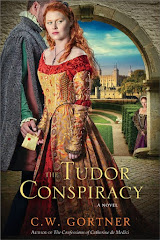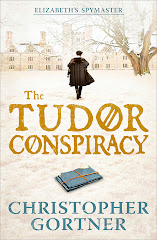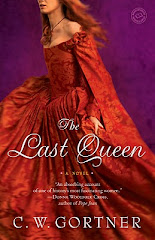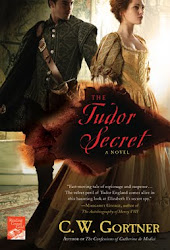 and feature a guest post by Mr Sansom here on Historical Boys.
and feature a guest post by Mr Sansom here on Historical Boys. Set in 1940, Sansom's novel is an unforgettable amalgam: part war-time thriller, part epic love story, and an unflinching look at the savage consequences of war. Harry Brett, a survivor of the defeat at Dunkirk, is recruited by British intelligence during the worst of Hitler's bombings on London to travel to Spain to spy on Sandy Forsyth, a former school companion-turned-shady-businessman. Brett has been to Spain before, with his idealist Communist friend, Bernie, now missing for three years, allegedly killed on the bloody battlefield of Jarama. As Brett finds himself caught up in the intrigue, deprivations and corruption of Franco's nascent fascist Spain, he befriends Bernie's former lover, Barbara, an ex-Red Cross nurse now involved with Forsyth but still haunted by Bernie's disappearance, as well as an impoverished Spanish family reeling from the effects of the Civil War. And as Harry Brett begins to unravel the secrets behind Sandy's business dealings, he comes face-to-face with the ghosts of the past and the bitter fruits of the present.
Mr Sansom's meticulous eye for detail, his powers of description, and humanity as a writer shine through in this compelling tale of a country crumbling in the grips of fascism and of the impossible choices we make to save those we love. His rendering of Madrid itself, decimated by one of the 20th century's most brutal conflicts, is mesmerizing; clinging to its vestiges of elegance and promise even as Franco paralyzes Spain in a relentless vise of fear, poverty, and oppression.
On a personal note, I was raised in Spain during the final years of Franco's regime and can still recall the falangist salute we had to do every morning at school. I knew of course that he supported Hitler, but I was taught that he did so only to prevent the Nazis from invading Spain - a promotional fallacy, the truth of which I learned later on as an adult. As a child, I was insulated for the most part from how Franco's long reign had crippled Spaniards' freedoms; but I did witness how his death turned the country upside down before initiating a glorious renaissance in every aspect of culture and society. My grandmother and many maternal relatives lived through the Civil War, and reading this novel reminded me vividly of stories they used to tell me of surviving the chaotic terror in Madrid. Some of the most poignant moments in WINTER IN MADRID involve Barbara's work with children orphaned by the war, and Mr Sansom kindly offers this essay on this tragic and oft-overlooked aspect of Franco's regime:
The Children of Franco's Orphanages
by C.J. Sansom
On the 1st of April 1939 the Spanish Civil War ended. During three years of warfare the elected Republican government had fought the forces of General Franco and the German and Italian units sent by Hitler and Mussolini to aid him. In the absence of help from Britain and France, the Republic had been forced to turn to the Soviet Union for aid, Stalin's price being greatly enhanced power for the small Spanish Communist party. The Republic had been gradually beaten back into a smaller and smaller area, and after the fall of Catalonia it finally surrendered. There is a photograph of the Republic's last leader, Julián Besteiro, broadcasting the surrender, grave faced, in a badly lit room. He died in one of Franco's jails a year later. Franco's forces entered the third of Spain still under Republican control, including Madrid.
third of Spain still under Republican control, including Madrid.
 third of Spain still under Republican control, including Madrid.
third of Spain still under Republican control, including Madrid.The war had been ferocious, and had left innumerable orphaned children. Many adults had fallen on the battlefield, others had been victims of air raids or of the terror waged against civilian political opponents by both sides. Now, with Franco's victory, the bloodshed did not cease. As victor, his policy was to "cleanse" Spain of remaining Republican activists; that meant the execution of thousands and the imprisonment, often in concentration camps, of thousands more. Children would come home to find their parents had been taken away by the police and they were left helpless and alone.
Spain in the 1940s was utterly impoverished. Much of the country's infrastructure had been wrecked in the war, social dislocation was enormous, there were a succession of bad harvests and Franco's administration was corrupt and chaotic. Observers in Spanish cities reported the many children, often sick or crippled, hawking cigarettes and begging in the streets, or living rough in feral gangs.The government's response to the problem was to bring in the Spanish Catholic church, which historically held great power and had had a virtual monopoly of schools and orphanages. With the exception of the Basque country, the church throughout Spain had been entirely on the side of Franco's rebels.
In one way that is not surprising, for the Republican government had been strongly opposed to the historic power of the church and had turned a blind eye to many church burnings, while on the outbreak of the Civil War in 1936 there had been atrocities against priests and nuns on the Republican side. Even so, the unquestioning support given to Franco's violent and vengeful regime not only during the Civil War but after his victory, cannot fail to disturb.
This is the background against which many Spanish children, both during and aft
 er the Civil War, were rounded up and sent to church orphanages. There is a photograph in Antony Beevor's The Battle for Spain of a group of frightened looking Spanish children, the oldest no more than twelve, being trained to give the Fascist salute below a series of nightmarish posters of communistic ogres threatening helpless children. The orphanages were determined to reverse any liberal, left-wing or irreligious ideas the children may have picked up from their parents, and indoctrination was intense. Children who had been given names like Ivan or Rousseau forced to take new ones.
er the Civil War, were rounded up and sent to church orphanages. There is a photograph in Antony Beevor's The Battle for Spain of a group of frightened looking Spanish children, the oldest no more than twelve, being trained to give the Fascist salute below a series of nightmarish posters of communistic ogres threatening helpless children. The orphanages were determined to reverse any liberal, left-wing or irreligious ideas the children may have picked up from their parents, and indoctrination was intense. Children who had been given names like Ivan or Rousseau forced to take new ones.It was a hard time and a harsh regime and no quarter was given to nonconformists of any kind, certainly not by a church determined the children in its care would draw up as good Catholics and good Francoists. Many, though not all, of the orphanages were brutal places.Some of the older street children were doubtless smart enough to conform outwardly with the political and religious indoctrination for the sake of the limited food -- outside, many in Spain were on the verge of starvation -- and for a roof over their heads, no matter how spartan the orphanages. Some, especially perhaps those whose parents had been victims of red rather than blue terror, would have accepted faith in God and Franco. But for the many traumatised by the war and the loss of their parents, there would have been little if any comfort.
That first generation of children lost their parents between 1936, when the war began, and around 1941 when the Francoist "cleansing" had claimed most of its desired victims. They would have left their orphanages later in the hard decade of the 1940s. Whatever the economic status of their parents before the war, and most would have been poor, their children would have been cast out with little skills into a poverty-stricken dictatorship; those with a Republican family background would have been known to the police and under particular pressure to conform. Most would have done so, outwardly at least, for being a dissident in a ruthless police state, whether of left or right, takes more courage and obstinacy than people living comfortably in democracies can realise. Most would have survived to see life become a little less frugal in the sixties, and to witness the "Francoist" regime and its warped and archaic ideology vanish almost overnight after Franco's death in 1975.
Even so, many who had been in power under Franco remained in place in the early years of democratic Spain, and even now many older people are reluctant, or afraid, to discuss the past. However, now that Spain has passed the Law of Historic Memory and acknowledged the cruelties done between 1936 and 1975, the sufferings of Franco's orphans are at last being recognised and discussed. I hope that may be some comfort to the elderly survivors of the Civil War years and of the años de hambre, the years of hunger, in the 1940s.
That first generation of children lost their parents between 1936, when the war began, and around 1941 when the Francoist "cleansing" had claimed most of its desired victims. They would have left their orphanages later in the hard decade of the 1940s. Whatever the economic status of their parents before the war, and most would have been poor, their children would have been cast out with little skills into a poverty-stricken dictatorship; those with a Republican family background would have been known to the police and under particular pressure to conform. Most would have done so, outwardly at least, for being a dissident in a ruthless police state, whether of left or right, takes more courage and obstinacy than people living comfortably in democracies can realise. Most would have survived to see life become a little less frugal in the sixties, and to witness the "Francoist" regime and its warped and archaic ideology vanish almost overnight after Franco's death in 1975.
Even so, many who had been in power under Franco remained in place in the early years of democratic Spain, and even now many older people are reluctant, or afraid, to discuss the past. However, now that Spain has passed the Law of Historic Memory and acknowledged the cruelties done between 1936 and 1975, the sufferings of Franco's orphans are at last being recognised and discussed. I hope that may be some comfort to the elderly survivors of the Civil War years and of the años de hambre, the years of hunger, in the 1940s.
Copyright © 2009 C.J. Sansom, author of Winter in Madrid: A Novel
A former lawyer, C. J. Sansom now writes full time. He holds a Ph.D. in history and is the author of Dissolution, Dark Fire, Sovereign and Revelation in the Matthew Shardlake series. Winter in Madrid was a major bestseller in England and is being published in twelve countries. Sansom lives in Brighton, England.


















